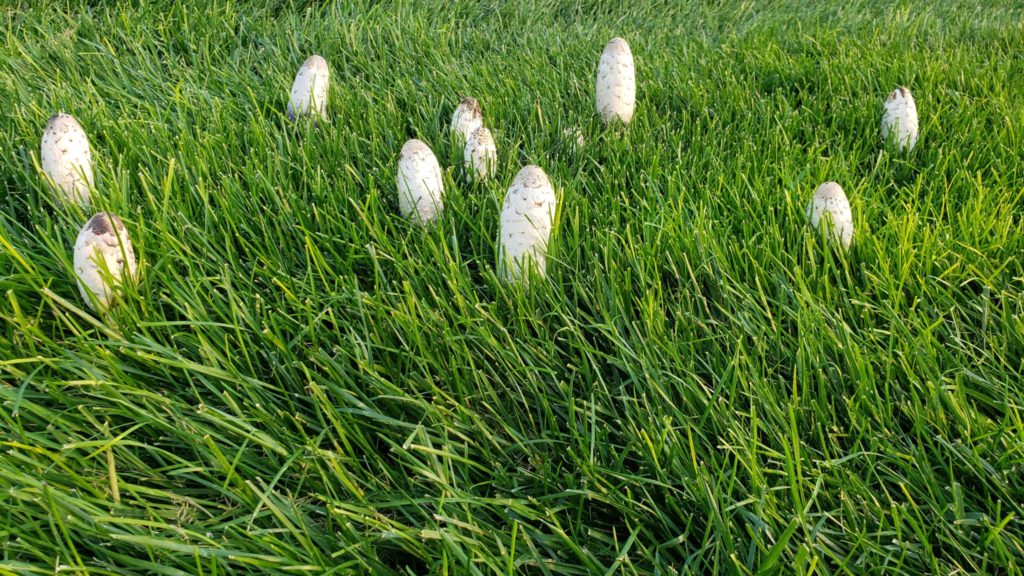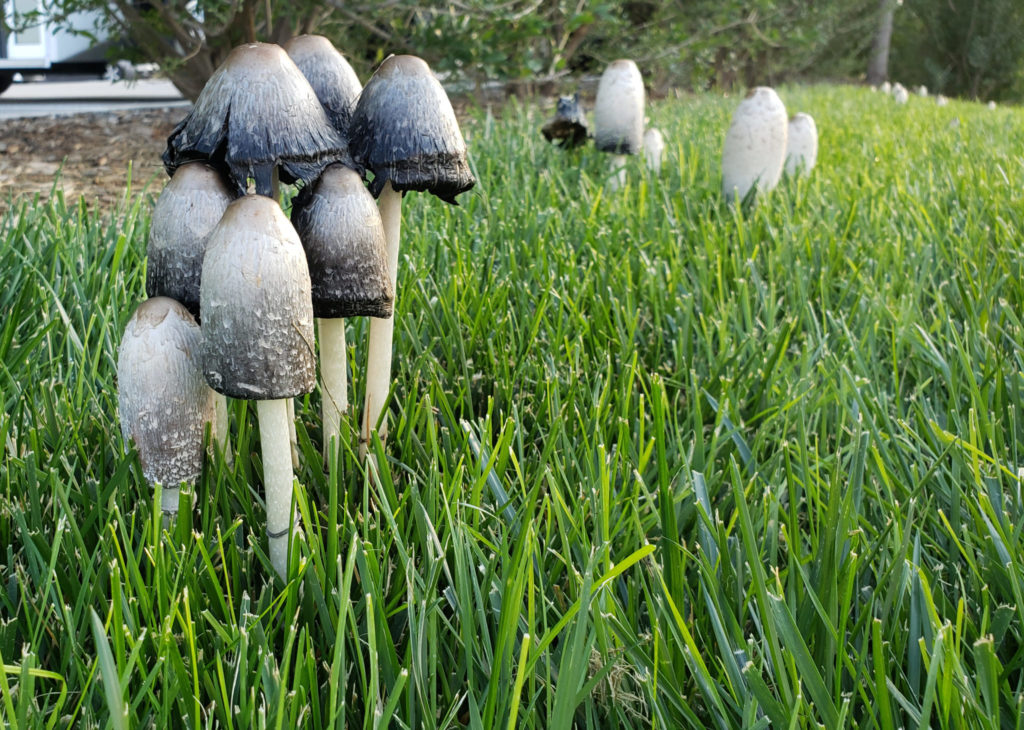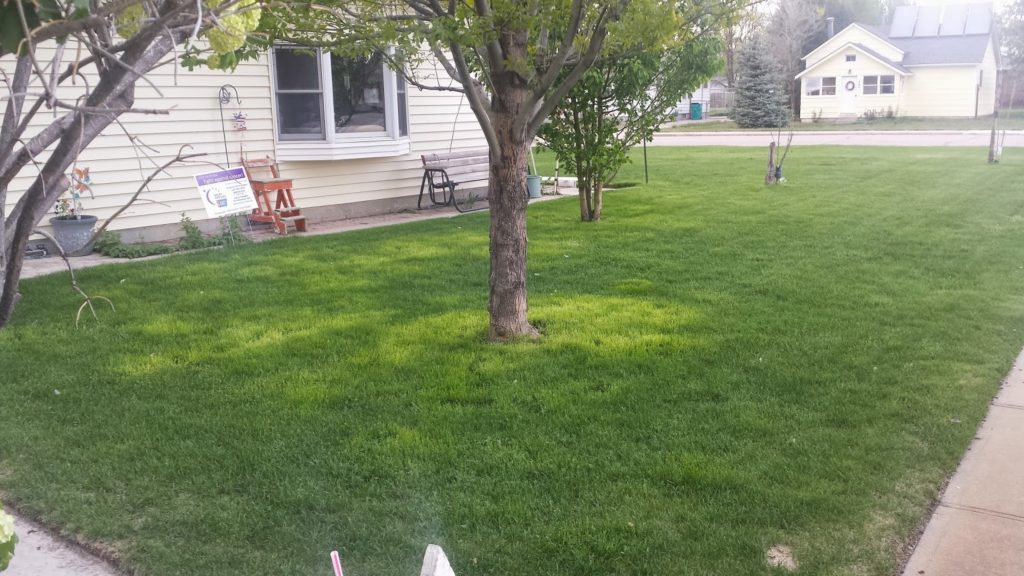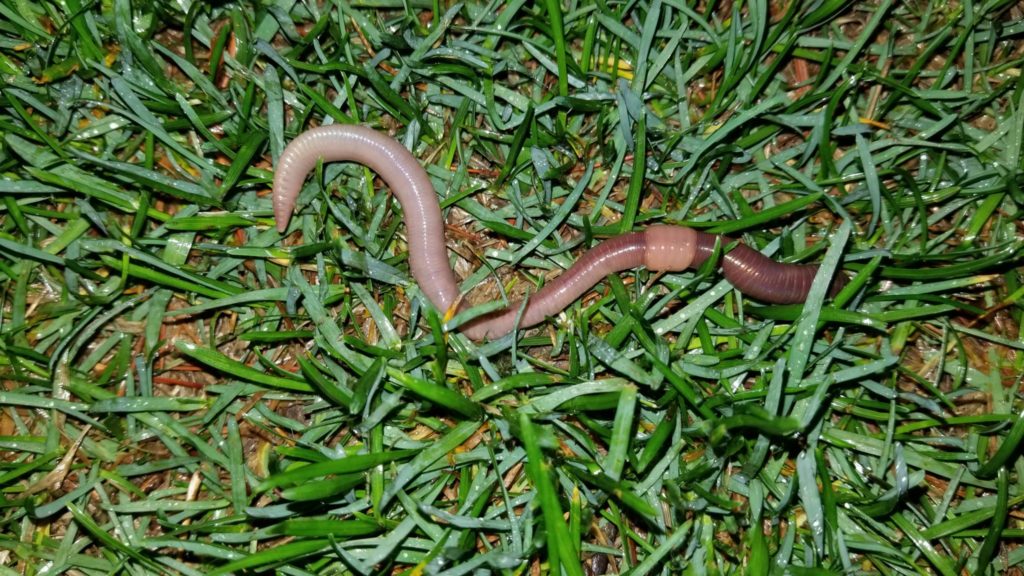
Colorado’s Front Range has felt more like Seattle over the past few weeks, with a rainy May giving way to a wet and cool June. The weather has made the landscape lush and green, but it’s also brought surprises for many longtime residents who are used to very different conditions this time of year.
Tony Koski, a Colorado State University professor of turfgrass science and CSU extension specialist, has been helping homeowners navigate how to change their lawn care routines to account for this unusual spring.
“We’ve been getting a lot of people noticing odd things about their lawns with all this rain,” Koski said.
That includes new mushrooms, discolored grass and even a fungus that bears a striking resemblance to dog vomit. Here’s a rundown of what Koski says people are seeing, how they can adapt and what you can do to keep your lawn in tip-top shape this spring and beyond.
Are the mushrooms growing in your lawn bad?

Photo courtesy Tony Koski
Over the past few weeks, Koski said he’s received lots of pictures of interesting mushrooms growing in lawns across the Front Range.
“It’s a perfectly natural thing to have happen,” Koski said. “The mushrooms are not harming the grass at all – they’re just living on the dead organic matter in the lawn, like old grass clippings and dead roots in the soil.”
With this being said, some types of mushrooms could be dangerous to children or curious pets. That’s why Koski recommends either mowing them off or picking them and putting them in the trash.
“Most of them are not poisonous, but you don’t want to take that risk,” Koski said.
What is the weird yellow growth that’s appeared in my grass?

Photo courtesy Tony Koski
Koski said all of this rain has created prime conditions for “slime molds,” which look like yellow or purple blobs in the grass or in the mulch next to lawns. It also has another name because of what it sometimes bears a striking resemblance to: dog vomit fungus.
“It’s totally harmless, Koski said. “It doesn’t hurt anything; it’s more of a curiosity than anything else.”
Why is my lawn turning yellow?

Photo courtesy Tony Koski
The abundant rain that’s turning the foothills green is doing something else to some lawns: giving the grass a yellow hue.
Luckily, Koski said this is harmless and will go away on its own once the weather gets warmer and drier.
“It’s a temporary iron deficiency because of how wet the soil is,” Koski said. “For this same reason, some landscape plants and perennials could also get a bit yellow, but once we get warmer weather, this should clear up on its own.”
What’s with all the nightcrawlers and weeds?

Photo courtesy Tony Koski
Koski said when it rains this much, people see more worms in their lawn than usual – and naturally, they’re worried if these creepy-crawlers are hurting their landscaping.
“Definitely not,” Koski said. “Nightcrawlers are a sign of a perfectly healthy lawn.”
And if your battle against weeds is not going well, you’re certainly not alone. Koski said virtually all lawns are seeing more weeds than usual. And even if you use a crabgrass preventer for weed control, this can be diluted by the wet spring, meaning that it might not be as effective as it could be in other seasons.
Should you leave grass clippings on your lawn?

Photo courtesy Tony Koski
The rainy conditions have enabled grass to grow more quickly, but the less-than-ideal weather might also sap some motivation for yard work. This means that when the mowing finally gets done, big globs of grass clippings may follow – and Koski says it’s very important for these to not linger on your lawn.
“Typically we encourage people to leave clippings on their lawns when they mow, but when you have big, wet clumps of grass clippings, like many people do now, you should bag those and use them to make compost or for mulch for your garden,” Koski said. “What you don’t want to do is leave those big globs fermenting in piles on your lawn – it could kill the grass underneath.”
When should you turn your sprinklers back on?
They definitely should not still be on with the near-daily storms.
“One of the biggest things I’ve noticed is that people still have their irrigation systems running. For all of reasons we’ve just discussed, they clearly should not be adding more water to all the moisture we’ve been having,” he said.
But, with a drier weather pattern potentially on the way, Koski said you may be turning your sprinklers back on sooner than you think.
“It doesn’t take that many hot and sunny days for lawns to dry out again,” Koski said. “As for signs for when to turn your irrigation system back on, I recommend looking for a little bit of browning. Definitely don’t be thinking that you can go a month without watering once it gets hot again.”